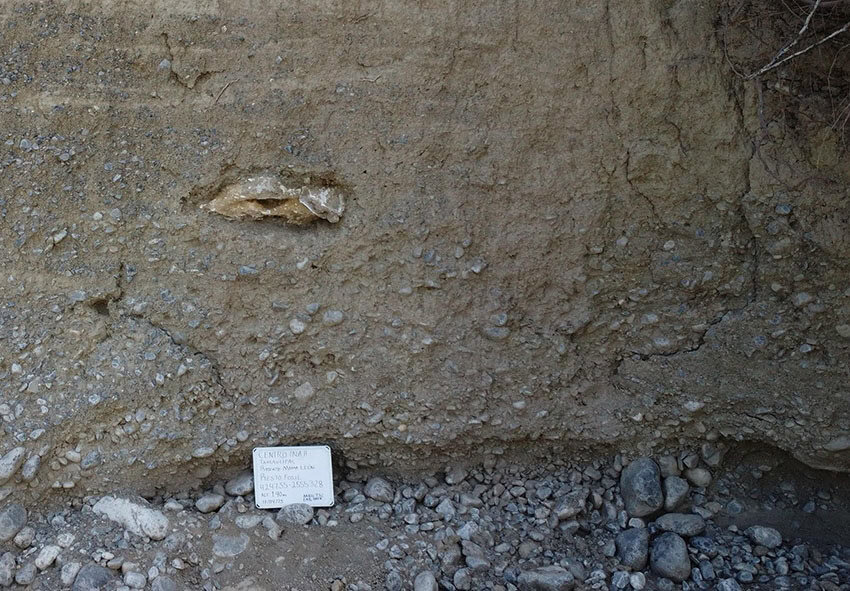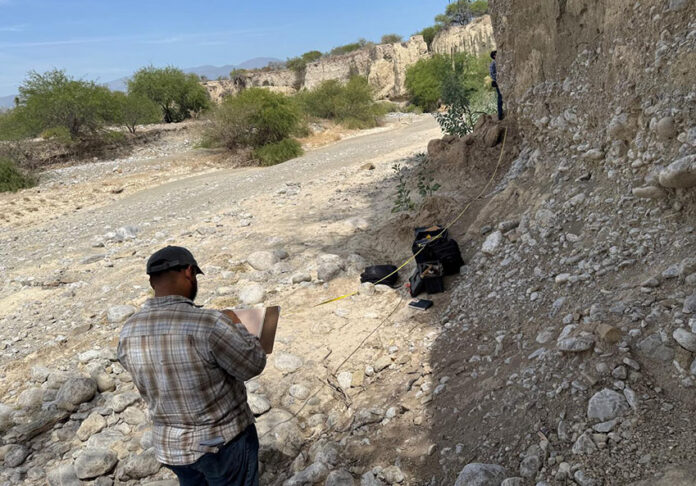Authorities in the northern state of Tamaulipas reported the discovery of suspected mammoth fossils near the Francisco Villa Ejido, in the Magical Town of Tula.
According to officials, a team of scientists from the National Institute of Anthropology and History (INAH) Tamaulipas, unearthed the fossils on April 17 following an anonymous tip. The remains were found embedded on the wall of a creek known as El Vado de la Muralla.

The remains need further research to determine the species they belong to, biologist Ángel Banda said. However, initial observations suggested that one of the exposed bones corresponds to the hip of a proboscidean, a group of mammals that includes elephants and extinct species like mammoths and mastodons.
“The area [where the fossils were found] consisted of alluvial deposits with sediments like sand, gravel, and silt. Over time, various remains of megafauna were found there,” Banda explained. “As a result, we conducted a broader exploration that enabled us to locate part of a jawbone with teeth from a camelid and the upper molar of an equine.”
With the information they have to date, scientists believe that the fossils date back to the Late Pleistocene, making them at least 10,000 years old. Further studies at the Archaeology Section of the INAH Tamaulipas Center, in Ciudad Victoria, will allow researchers to draw firmer conclusions.
Exploration and recovery efforts continued until April 18, with the support of Tula Mayor René Lara Cisneros, who arranged for the site to be guarded by the Tamaulipas State Police to prevent any looting.
Head of INAH Tamaulipas Tonantzin Silva said that this was a successful case of collaboration between the INAH, local authorities and citizens, and called on citizens to report any new findings.
“We urge residents to report back to us any archaeological or paleontological discovery, so that the heritage can be properly investigated and safeguarded,” he said.
Tamaulipas is already home to a place known as the Mammoth Valley, a site where mammoth fossils were discovered in 1958 on a 12-hectare plot of land. Farther south in México state, remains of over 200 mammoths were found under what is now AIFA airport, not far from the site of the first known mammoth traps, built by prehistoric hunters.
Further research by archeologists will confirm if the new findings also belong to the colossal species, which went extinct over 4,000 years ago.
Mexico News Daily
